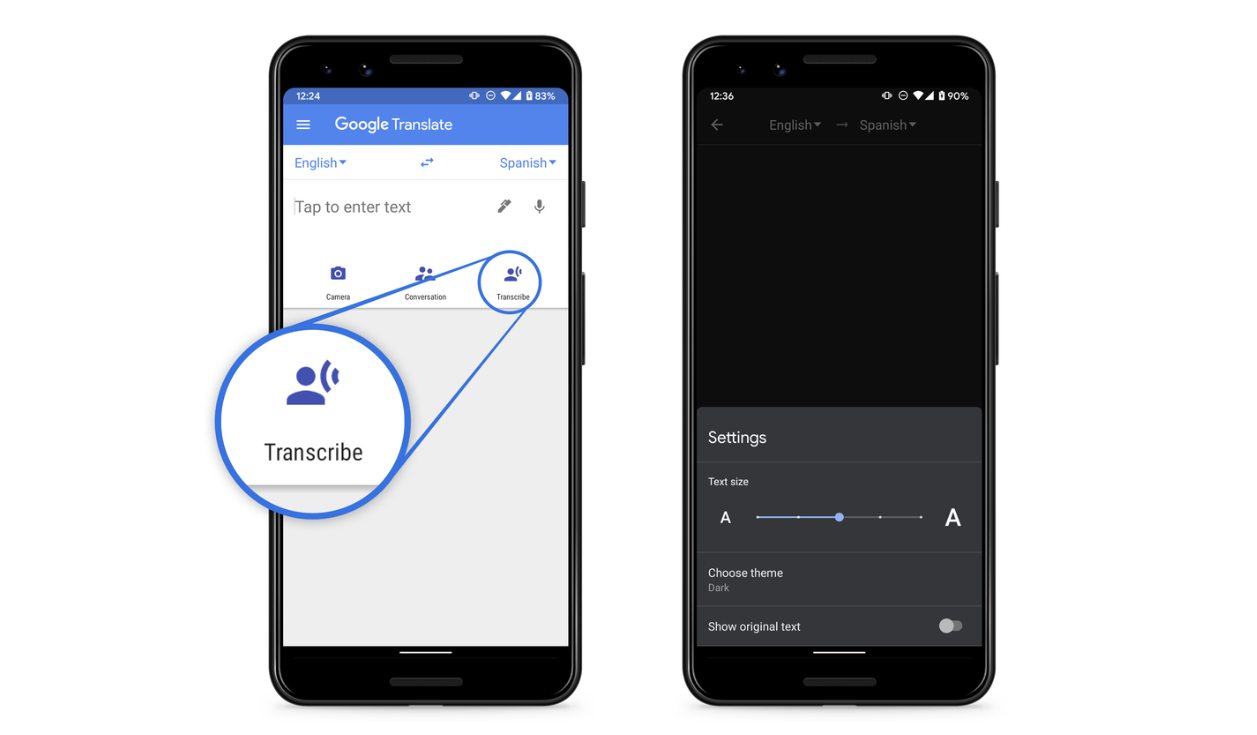 APPS
APPS
 APPS
APPS
 APPS
APPS
Google LLC today announced the general availability of a new, artificial intelligence-powered and near real-time transcription feature for its Google Translate app.
First revealed in January, the transcription feature is now rolling out on Android devices this week. Google Translate will be able to support transcribed translations between any pair of eight languages, including English, French, Hindi, Portuguese, Russian, Spanish and Thai.
In a blog post, Google Product Manager Sami Iqram said Translate previously wouldn’t work for longer translated discussions, for example talks at a lecture or a conference or storytelling.
The new feature will be delivered to Android users via an update to the Google Translate app being pushed out this week. Once installed, users can just hit the new “Transcribe” option that appears on the app’s home screen. Then, they choose the source and target languages and hit the mic icon to begin transcribing.
Google said it will bring the feature to the iOS version of the app too but hasn’t said when.

Google said in January that the machine learning technology used to power the Transcribe feature is based on its earlier work with Android’s Live Transcribe accessibility feature, which delivers real-time captions for hearing-impaired users. Just as with that service, Google Translate’s transcription is done in the cloud, where it has access to Google’s powerful Tensor Processing Unit chips, rather than on device.
Google’s TPUs are necessary because the feature needs enough processing power both to translate and to render speech into a text form, and many devices simply aren’t powerful enough. Transcription from speech in real time is not easy because the app needs to interpret both the cadence of the speech and any pauses, and also add punctuation where needed.
Google said the real-time transcription feature will only work with speech that’s captured by the phone’s microphone, though it hopes to add the ability to transcribe prerecorded audio files at a later date.
Google said the transcribed speech will become more accurate over time as the app’s algorithms learn and improve from regular use.
The new feature is yet another example of how Google is able to keep innovating and find synergies between its offerings, said Constellation Research Inc. analyst Holger Mueller.
“Google has already added transcription to its home devices, its Pixel 4 phone series and others, so no surprise it is coming to translate as well, further adding to its lead in the translation area,” Mueller said. “Large product offering synergies at work such as this are good news for customer and consumers alike.”
Support our open free content by sharing and engaging with our content and community.
Where Technology Leaders Connect, Share Intelligence & Create Opportunities
SiliconANGLE Media is a recognized leader in digital media innovation serving innovative audiences and brands, bringing together cutting-edge technology, influential content, strategic insights and real-time audience engagement. As the parent company of SiliconANGLE, theCUBE Network, theCUBE Research, CUBE365, theCUBE AI and theCUBE SuperStudios — such as those established in Silicon Valley and the New York Stock Exchange (NYSE) — SiliconANGLE Media operates at the intersection of media, technology, and AI. .
Founded by tech visionaries John Furrier and Dave Vellante, SiliconANGLE Media has built a powerful ecosystem of industry-leading digital media brands, with a reach of 15+ million elite tech professionals. The company’s new, proprietary theCUBE AI Video cloud is breaking ground in audience interaction, leveraging theCUBEai.com neural network to help technology companies make data-driven decisions and stay at the forefront of industry conversations.